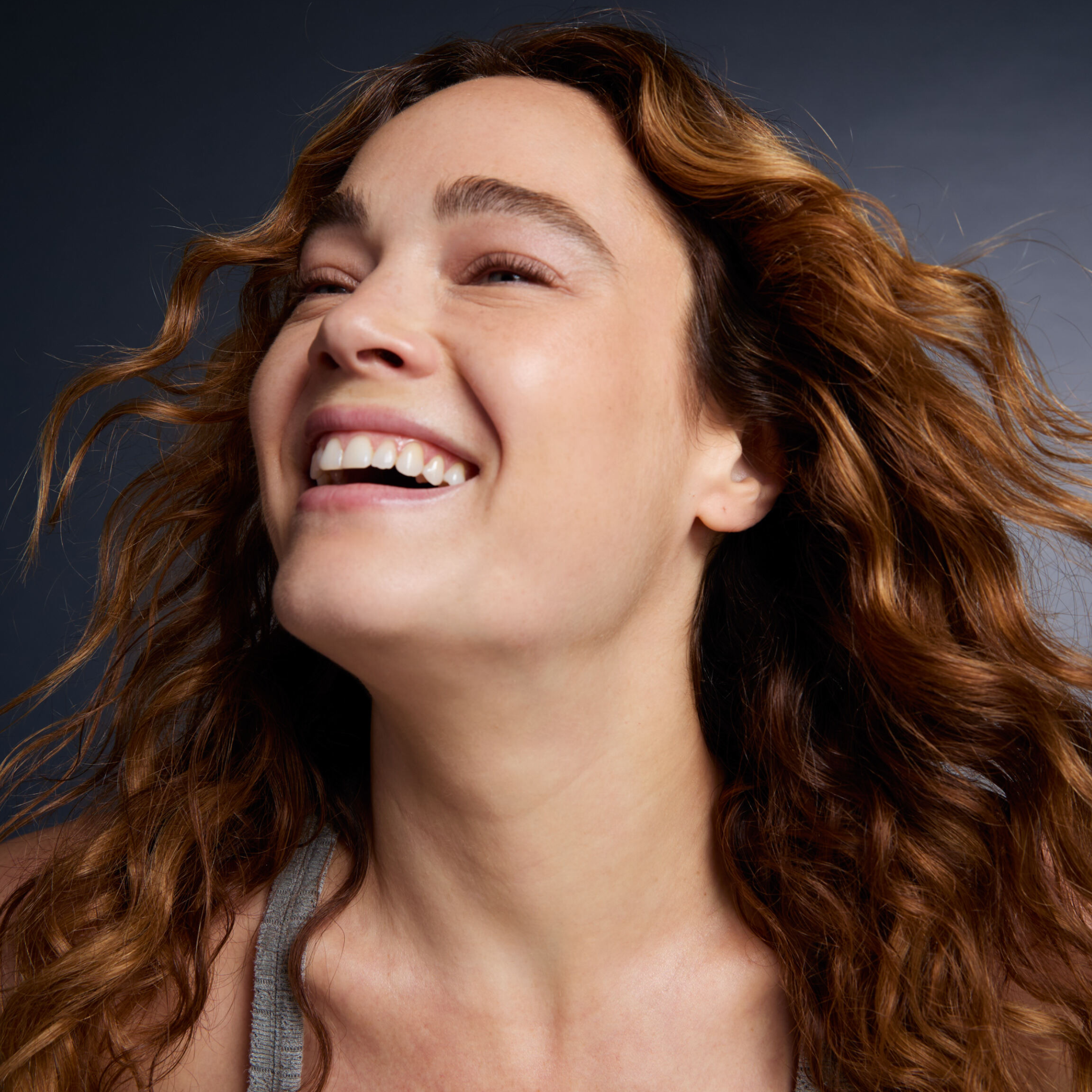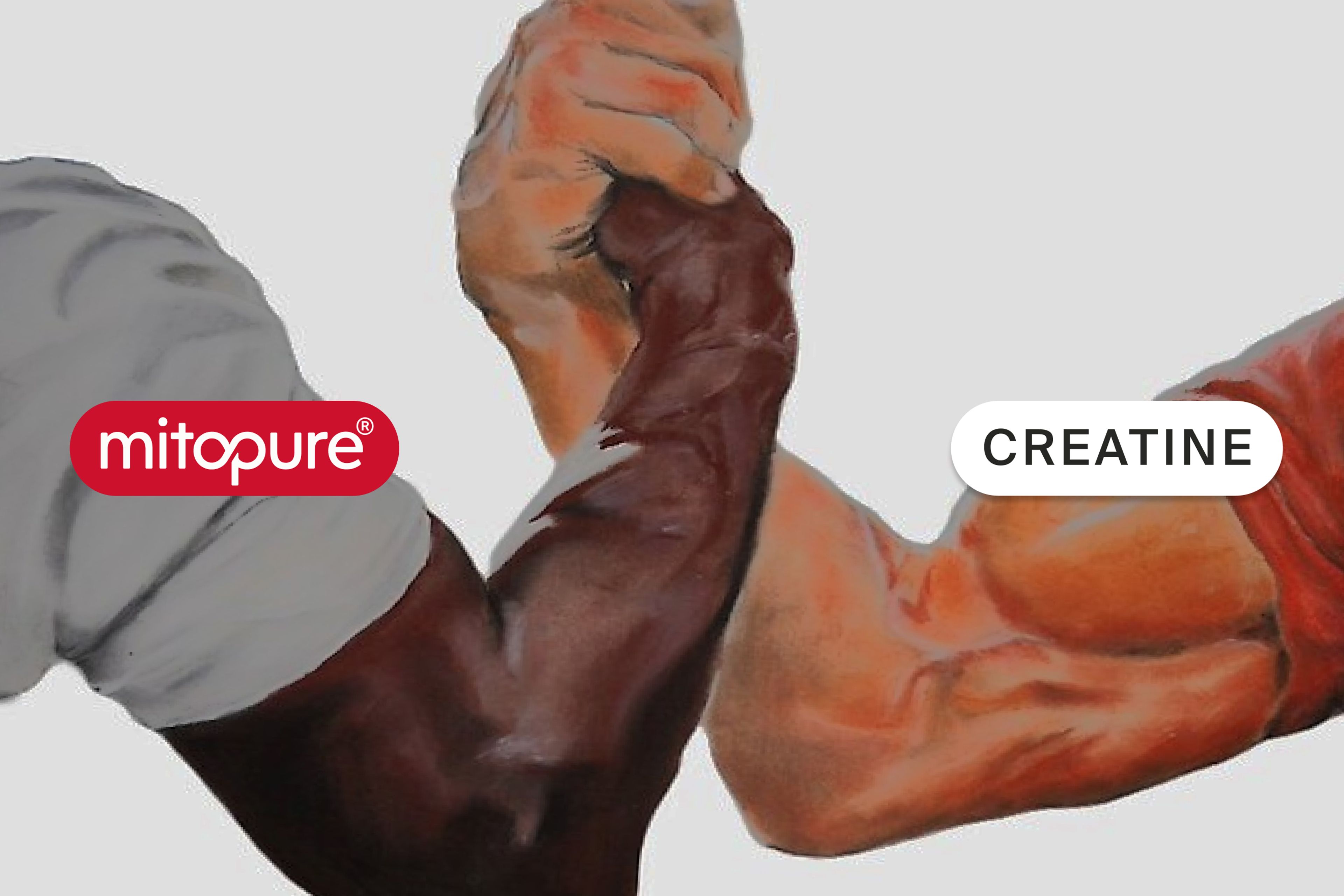Biohacking 101: next-level health
Eternal youth unleashed: exploring the cutting-edge and holistic biohacking strategies paving the way for an ageless future.

What to know
Biohacking is a movement to use the tools of science to carry out home experiments for improvements in health
The various types of biohacking are connected and constitute a holistic approach to wellness
Among the various types of biohacking are a nutritional approach, neurohacking, emotional and physical, as well as digital
In an era where science and technology converge, a new frontier of self-improvement has emerged, known as biohacking. At its core, biohacking is a multifaceted approach to enhancing human potential through a combination of biology, technology, and lifestyle modifications.
From optimizing nutrition and exercise routines to experimenting with cutting-edge technologies like wearable devices, biohackers seek to unlock the full spectrum of human performance and well-being.
This blog dives into the world of biohacking, exploring its principles, techniques, and potential impacts on our health as individuals take the reins of their own biological destinies in pursuit of peak vitality.
Getting started with biohacking
Biohackers are interested in leveraging the tools of science, taking a proactive approach to wellness, and “hacking” their biology for improved health.
While some examples of biohacking may seem extreme, expensive, and difficult to follow, others, like changes to your diet or exercise routine, can be more accessible for anyone curious about the biohacking world.
There are numerous types and examples of biohacking, including a nutritional approach, neurohacking, emotional and physical, as well as digital. Since biohacking is a holistic approach, the various types are connected.
In considering all types of biohacking, promoting the health of the mitochondria, the “powerhouse” of the cell, is an important consideration. Optimal mitochondrial function is tied to a number of health outcomes, both mental and physical, and mitochondrial decline is one of the key hallmarks of aging. Addressing mitochondrial function helps to ensure that your powerhouses can provide an ample supply of energy to thrive.[1]
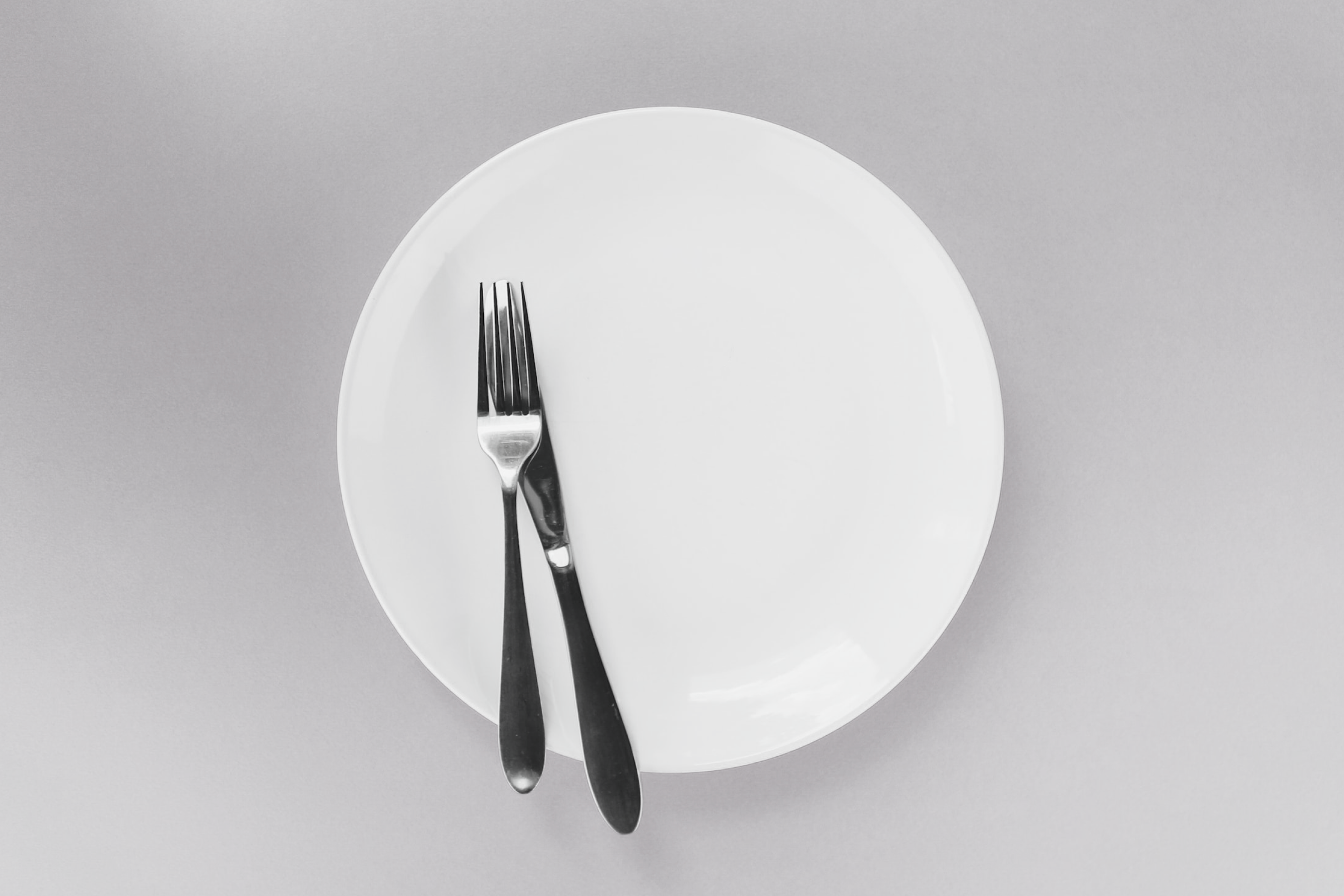
Nutritional biohacking
“Biohacking diets” have gained attention with regard to extending lifespan and human performance. Several dietary approaches, as well as anti-aging foods, have been identified.
Ketogenic diet
The ketogenic diet is an approach that involves greatly limiting carbohydrates, with moderate protein and plentiful consumption of fat. This diet has been found to have neuroprotective effects in both humans and animals, holding promise as a way to preserve health with age.[2]
Fasting
Intermittent and periodic fasting (IF and PF, respectively) have also been identified as biohacking nutrition approaches. IF refers to alternating short windows of fasting followed by eating. Fasting windows usually last around 12-48 hours and are repeated daily.
PF, on the other hand, involves a restriction of food for longer periods of time (2-7 days).[3]
These strategies have been found to promote cellular health, and positive effects have been observed with regard to reducing the risk of chronic disease, including metabolic, neurodegenerative, and cardiovascular disease. Fasting has also been shown to induce autophagy, which is the breakdown and recycling of old or damaged cells and is linked to healthy aging.
Caloric restriction
Restricting calories has been found to slow biological aging. [4]It should be noted that biological age is different from chronological age, as biological age uses algorithms and biomarkers to estimate disease risk rather than serve as a direct measure of years lived.
Studies on this topic have been conducted in rodents, monkeys, and humans and have shown that calorie restriction slows several biological pathways that contribute to aging. Usually, calories are reduced by 20-40% of normal consumption[5], but not to a level where malnutrition occurs.[6]
Ensuring that you get adequate nutrition is critical with any of these dietary interventions, so working with a registered dietitian or qualified healthcare practitioner can help determine your individual caloric ranges and macronutrient percentages.
Diets with nootropic effects
Consuming superfoods for biohacking optimal health has also been of interest, particularly those with nootropic effects. “Nootropic” refers to substances with the capacity to enhance cognition.[7]
Several studies have demonstrated the benefits of a diet high in antioxidants and sufficient vitamins in protecting against dementia. Nutrients such as vitamin E and magnesium may have nootropic effects, as do herbs like ashwagandha, ginseng, and rhodiola.[8]
Supplements for promoting health span
In addition to dietary patterns, biohackers include longevity supplements to promote wellness, performance, and healthy aging. These include:
- Resveratrol
- Melatonin
- Curcumin
- NAD+ precursors like NMN or NR
- Spermidine
- Urolithin A
Research is still ongoing to better understand the potential benefits of these compounds when it comes to[9] healthy aging.
How biohacking your nutrients affects gut health
Nutritional biohacking using different dietary strategies and supplements has been found to positively affect gut health. The types of food consumed have been shown to affect the composition of bacteria in the gut, and healthy gut composition is linked to reduced risk of chronic disease.[10]
One example of the effect of nutritional biohacking and gut health is the focus on eating a diet high in antioxidants. Numerous studies have demonstrated increases in beneficial bacteria following a diet high in polyphenols from plant-source foods such as fruits, vegetables, legumes, nuts, and seeds. A reduction in inflammation in the gut has also been found with a diet rich in plant foods.[11]

Neurohacking
The “neurohacking movement” refers to attempts to optimize the brain to achieve peak performance[12]. Techniques range from meditation to brain-training games to neurofeedback treatments.
Studies on meditation-based lifestyle interventions have revealed that this practice may promote an increase in neuroplasticity (the ability of the neurons to form and reform new connections) and improvement in biomarkers of cellular health. It may also reduce the risk of major depressive disorder and other age-related medical conditions.[13]
Electroencephalography (EEG) devices have also played a role in the neurohacking movement and have been marketed directly to consumers. Many of these are geared towards brain optimization and wellness. EEG allows for communication between the brain and an external device, and one example of its use is to enable patients with spinal cord injuries to communicate or physically interact with their environment.[14]
Emotional biohacking
Emotional biohacking is a method of enhancing psychological health. This includes practices such as meditation, mindfulness, and deep breathing exercises, which may serve as avenues to relieve stress and anxiety.
Research has demonstrated that meditation can modify brain function. One study, for example, used machine learning and fMRI to investigate how meditation styles impact brain networks. Findings revealed that extensive meditation practice affects brain networks and that different meditation styles differentially affect connections in the brain. Additional research in this area will continue to explore how meditation may affect brain activity related to attention, self-awareness and self-monitoring, among other potential benefits.[15]
Sleep and emotions
Sleep optimization is a key part of well-being and healthy aging and has a strong connection to both physical and mental health. Poor sleep plays a role in anxiety, depression, and other problems with mood. Some evidence suggests an overlap of brain networks underlying sleep and emotional regulation. [16]Thus, the idea of “biohacking sleep” has been of interest when it comes to promoting health.
Sleep is closely tied to various aspects of health, including physical health. Studies in athletes, for example, have found that sleep is very important for performance and recovery. Physical strength and speed are tied to sufficient sleep, as is a reduction in the risk of injury.[17]
While there are many pharmacological interventions for improved sleep, other approaches include lifestyle modification, cognitive behavioral therapy, and the use of herbs and supplements. Lifestyle factors that may promote anxiety, such as smoking, caffeine, alcohol, and drug use, should be addressed to help improve sleep, as well as those that are protective, such as social support, physical activity, and practicing sleep hygiene[18]. Cognitive behavioral therapy is a method used to address worry and rumination that may also promote better sleep.[19]

Physical biohacking
There are numerous biohacking methods that may be used to enhance physical performance or recovery, and these may be considered “physical biohacking” strategies. Some of these methods involve exposing the body to some degree of stress to achieve a physiological response for health improvement.
HIIT training
High-intensity interval training (HIIT) refers to brief periods of intense activity with close to maximal effort. Research has revealed numerous benefits of HIIT when it comes to exercise capacity and metabolic health in different populations. These benefits are derived both from the intensity of the exercise, as well as the intermittent nature of it.[20]
There have been numerous studies on HIIT and exercise capacity. These studies have revealed an increase in VO2max, which refers to maximum oxygen consumption during exercise and is an indication of cardiovascular fitness, [22]resulting from HIIT training. Studies have also shown that there are improvements in the functioning of the mitochondria, considered the “powerhouse” of the cell, in the muscle following HIIT.[21]
In terms of improvements in metabolic health resulting from HIIT, improved glucose tolerance and insulin sensitivity are two potential benefits. Studies performed in different populations have found effects such as a decrease in plasma glucose and insulin following interval training. These include studies in individuals with obesity and type 2 diabetes.
Cold exposure (ice bath)
Cold-water immersion (CWI), which may take the form of ice bathing, cold water swimming, or other activities, has also gained attention as a strategy to improve health. Exposure to cold water has been thought to have numerous benefits with regard to immune health, weight, mental fitness, and more. A recent review of the literature on CWI examined the studies in this area and identified some benefits backed by evidence.[23]
One of the benefits found is reduction in body fat, as well as transformation of the fat stored in the body to increase calories burned. With exposure to cold, blood flow to brown adipose tissue, the type of fat that is involved in burning calories, is increased. This may protect against a host of chronic conditions, such as diabetes and cardiovascular disease.[24]
In addition to positive effects when it comes to body weight, CWI also holds promise with regard to promoting immune health and preventing infection. Additional studies in this area are needed.
Heat therapy (saunas / infrared sauna)
Exposure to heat produces changes in the human body as the blood is directed to the skin and heat is released. Heart rate increases, and blood pressure decreases as the cardiovascular system is activated. Given the potential benefits of heat therapy, sauna bathing as a form of passive heat therapy has gained attention.[25]
Sauna bathing is particularly popular in Finland and is characterized by hot temperatures and dry air conditions with good ventilation. This practice has been found to have cardiovascular benefits, with reductions in blood pressure, reduced arterial stiffness, improved endothelial function, and a decrease in cardiovascular mortality.[26]
Far-infrared sauna (FIRS) bathing is another practice that may also have potential health benefits. These saunas utilize 120-V infrared elements to radiate heat to 40–60°C. One study performed in men found that FIRS bathing appeared to provide benefits for recovery from maximal endurance exercise, and other studies have revealed other potential benefits[27].
Biohacking with contrast therapy
Contrast therapy (CT), is an approach that uses hot and cold treatments. Some studies have revealed potential health benefits. For example, a study performed in healthy adults found that CT was able to increase blood flow, reduce muscle stiffness, increase muscle elasticity, and relieve pain.[28]

Biohacking skin
Biohacking methods also apply to the skin, and the close association between the mitochondria and skin health is of interest. Bioactive compounds, such as urolithin A and resveratrol, have been shown to improve mitochondrial function and prevent skin aging and disease. Given that mitochondria play a key role in maintaining skin health, they are an important target when it comes to therapeutic treatments.[29]
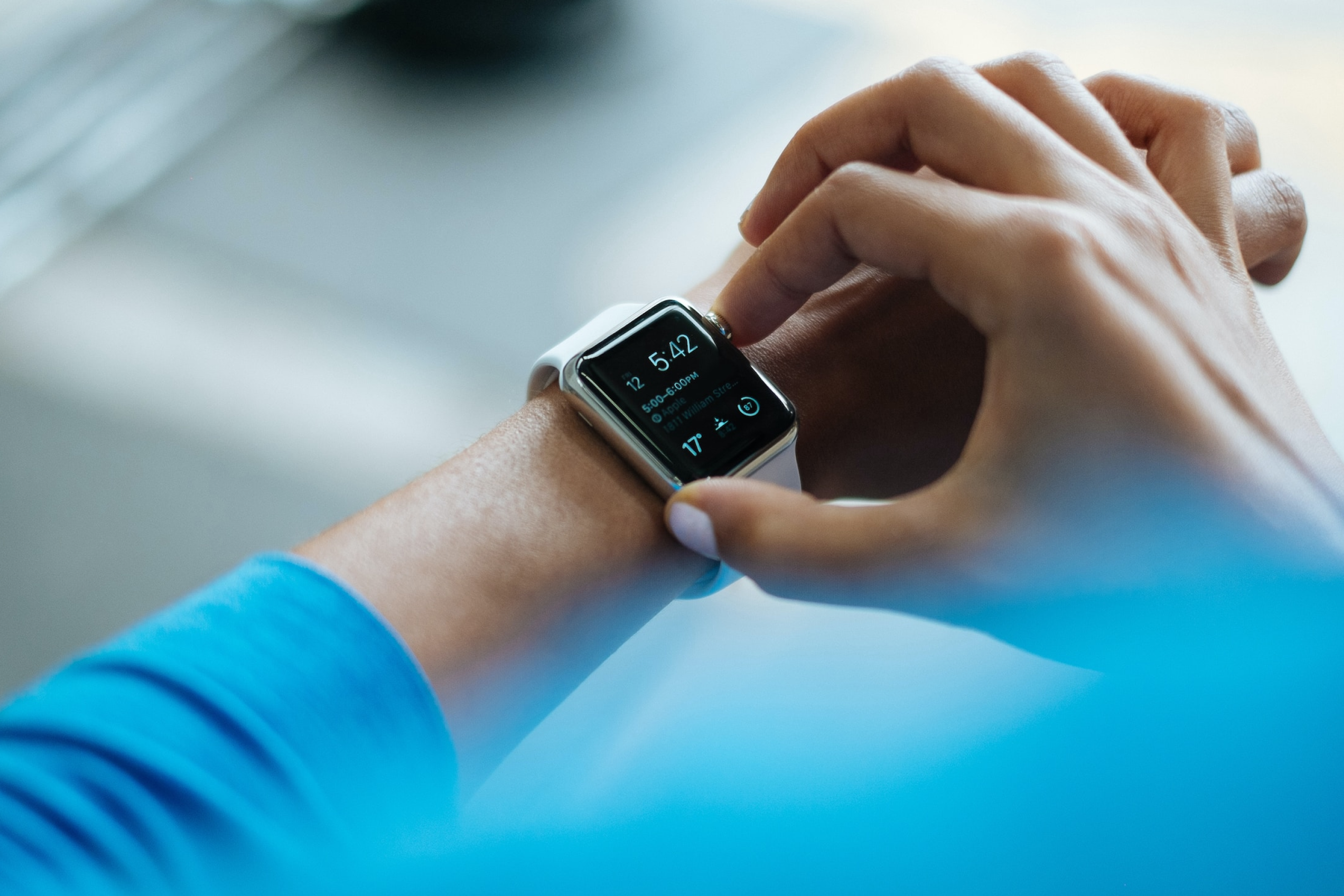
Digital biohacking
Various types of devices may be used to monitor health. These include smartwatches, rings, and other wearable devices that can monitor biometrics such as heart rhythm, heart rate, blood pressure, and sleep. [30]Additional research in this area is still needed to determine how patients may best use these devices in concert with medical professionals for improvements in health.
Continuous glucose monitoring (CGM) has also gained interest as a form of digital biohacking, even among healthy individuals without diabetes. CGM may allow for an improvement of physical performance, given that it can provide information about glucose values that can optimize nutritional strategies pre-, during, and post-exercise. Such devices can also help users understand how eating certain foods and states of stress affect glucose levels.[31]
Final words
The various forms of biohacking will continue to be of interest as strategies to promote healthy aging are explored. Numerous lifestyle behaviors may be performed to confer protective benefits with age, and additional research will reveal how different practices may be integrated for optimal health. These include genetic biohacking, seeking to modify gene expression.
Authors

Professor of Nutrition & Scientific Writer

Reviewed by
Senior Manager of Nutrition Affairs
References
- ↑
Nicolson GL. Mitochondrial Dysfunction and Chronic Disease: Treatment With Natural Supplements. Integr Med (Encinitas). 2014 Aug;13(4):35-43. PMID: 26770107; PMCID: PMC4566449.
- ↑
Moreno CL, Mobbs CV. Epigenetic mechanisms underlying lifespan and age-related effects of dietary restriction and the ketogenic diet. Mol Cell Endocrinol. 2017 Nov 5;455:33-40. doi: 10.1016/j.mce.2016.11.013. Epub 2016 Nov 22. PMID: 27884781.
- ↑
Longo VD, Di Tano M, Mattson MP, Guidi N. Intermittent and periodic fasting, longevity and disease. Nat Aging. 2021 Jan;1(1):47-59. doi: 10.1038/s43587-020-00013-3. Epub 2021 Jan 14. PMID: 35310455; PMCID: PMC8932957.
- ↑
Belsky DW, Huffman KM, Pieper CF, Shalev I, Kraus WE. Change in the Rate of Biological Aging in Response to Caloric Restriction: CALERIE Biobank Analysis. J Gerontol A Biol Sci Med Sci. 2017 Dec 12;73(1):4-10. doi: 10.1093/gerona/glx096. PMID: 28531269; PMCID: PMC5861848.
- ↑
Usually, calories are reduced by 20-40% of normal consumption
- ↑
Longo VD, Anderson RM. Nutrition, longevity and disease: From molecular mechanisms to interventions. Cell. 2022 Apr 28;185(9):1455-1470. doi: 10.1016/j.cell.2022.04.002. PMID: 35487190; PMCID: PMC9089818.
- ↑
Onaolapo AY, Obelawo AY, Onaolapo OJ. Brain Ageing, Cognition and Diet: A Review of the Emerging Roles of Food-Based Nootropics in Mitigating Age-related Memory Decline. Curr Aging Sci. 2019;12(1):2-14. doi: 10.2174/1874609812666190311160754. PMID: 30864515; PMCID: PMC6971896.
- ↑
Joseph JA, Shukitt-Hale B, Denisova NA, Prior RL, Cao G, Martin A, Taglialatela G, Bickford PC. Long-term dietary strawberry, spinach, or vitamin E supplementation retards the onset of age-related neuronal signal-transduction and cognitive behavioral deficits. J Neurosci. 1998 Oct 1;18(19):8047-55. doi:
- ↑
De Sousa Lages A, Lopes V, Horta J, Espregueira-Mendes J, Andrade R, Rebelo-Marques A. Therapeutics That Can Potentially Replicate or Augment the Anti-Aging Effects of Physical Exercise. Int J Mol Sci. 2022 Sep 1;23(17):9957. doi: 10.3390/ijms23179957. PMID: 36077358; PMCID: PMC9456478.
- ↑
Baothman OA, Zamzami MA, Taher I, Abubaker J, Abu-Farha M. The role of Gut Microbiota in the development of obesity and Diabetes. Lipids Health Dis. 2016 Jun 18;15:108. doi: 10.1186/s12944-016-0278-4. PMID: 27317359; PMCID: PMC4912704.
- ↑
Beam A, Clinger E, Hao L. Effect of Diet and Dietary Components on the Composition of the Gut Microbiota. Nutrients. 2021 Aug 15;13(8):2795. doi: 10.3390/nu13082795. PMID: 34444955; PMCID: PMC8398149.
- ↑
Wexler A. The Social Context of "Do-It-Yourself" Brain Stimulation: Neurohackers, Biohackers, and Lifehackers. Front Hum Neurosci. 2017 May 10;11:224. doi: 10.3389/fnhum.2017.00224. PMID: 28539877; PMCID: PMC5423946.
- ↑
Tolahunase MR, Sagar R, Faiq M, Dada R. Yoga- and meditation-based lifestyle intervention increases neuroplasticity and reduces severity of major depressive disorder: A randomized controlled trial. Restor Neurol Neurosci. 2018;36(3):423-442. doi: 10.3233/RNN-170810. PMID: 29614706.
- ↑
Gruzelier JH. EEG-neurofeedback for optimising performance. I: a review of cognitive and affective outcome in healthy participants. Neurosci Biobehav Rev. 2014 Jul;44:124-41. doi: 10.1016/j.neubiorev.2013.09.015. Epub 2013 Oct 12. PMID: 24125857.
- ↑
Guidotti R, D'Andrea A, Basti A, Raffone A, Pizzella V, Marzetti L. Long-Term and Meditation-Specific Modulations of Brain Connectivity Revealed Through Multivariate Pattern Analysis. Brain Topogr. 2023 May;36(3):409-418. doi: 10.1007/s10548-023-00950-3. Epub 2023 Mar 28. PMID: 36977909; PMCID: PMC10164028.
- ↑
Chellappa SL, Aeschbach D. Sleep and anxiety: From mechanisms to interventions. Sleep Med Rev. 2022 Feb;61:101583. doi: 10.1016/j.smrv.2021.101583. Epub 2021 Dec 8. PMID: 34979437.
- ↑
Charest J, Grandner MA. Sleep and Athletic Performance: Impacts on Physical Performance, Mental Performance, Injury Risk and Recovery, and Mental Health. Sleep Med Clin. 2020 Mar;15(1):41-57. doi: 10.1016/j.jsmc.2019.11.005. PMID: 32005349; PMCID: PMC9960533.
- ↑
Zimmermann M, Chong AK, Vechiu C, Papa A. Modifiable risk and protective factors for anxiety disorders among adults: A systematic review. Psychiatry research. 2020;285:112705.
- ↑
Morin CM, Vallières A, Guay B, Ivers H, Savard J, Mérette C, Bastien C, Baillargeon L. Cognitive behavioral therapy, singly and combined with medication, for persistent insomnia: a randomized controlled trial. Jama. 2009 May 20;301(19):2005-15.
- ↑
Bishop DJ, Botella J, Genders AJ, Lee MJ, Saner NJ, Kuang J, Yan X, Granata C. High-intensity exercise and mitochondrial biogenesis: current controversies and future research directions. Physiology. 2019 Jan 1;34(1):56-70.
- ↑
Atakan MM, Li Y, Koşar ŞN, Turnagöl HH, Yan X. Evidence-Based Effects of High-Intensity Interval Training on Exercise Capacity and Health: A Review with Historical Perspective. Int J Environ Res Public Health. 2021 Jul 5;18(13):7201. doi: 10.3390/ijerph18137201. PMID: 34281138; PMCID: PMC8294064.
- ↑
Ross R, Blair SN, Arena R, Church TS, Després JP, Franklin BA, Haskell WL, Kaminsky LA, Levine BD, Lavie CJ, Myers J, Niebauer J, Sallis R, Sawada SS, Sui X, Wisløff U; American Heart Association Physical Activity Committee of the Council on Lifestyle and Cardiometabolic Health; Council on Clinical Cardiology; Council on Epidemiology and Prevention; Council on Cardiovascular and Stroke Nursing; Council on Functional Genomics and Translational Biology; Stroke Council. Importance of Assessing Cardiorespiratory Fitness in Clinical Practice: A Case for Fitness as a Clinical Vital Sign: A Scientific Statement From the American Heart Association. Circulation. 2016 Dec 13;134(24):e653-e699. doi: 10.1161/CIR.0000000000000461. Epub 2016 Nov 21. PMID: 27881567.
- ↑
Esperland D, de Weerd L, Mercer JB. Health effects of voluntary exposure to cold water - a continuing subject of debate. Int J Circumpolar Health. 2022 Dec;81(1):2111789. doi: 10.1080/22423982.2022.2111789. PMID: 36137565; PMCID: PMC9518606.
- ↑
Muzik O, Mangner TJ, Leonard WR, et al. Sympathetic innervation of cold-activated brown and white fat in lean young adults. J Nucl Med. 2017;58(5):799–806.
- ↑
Heinonen I, Laukkanen JA. Effects of heat and cold on health, with special reference to Finnish sauna bathing. Am J Physiol Regul Integr Comp Physiol. 2018 May 1;314(5):R629-R638. doi: 10.1152/ajpregu.00115.2017. Epub 2017 Dec 20. PMID: 29351426.
- ↑
Kunutsor SK, Khan H, Laukkanen T, Laukkanen JA. Joint associations of sauna bathing and cardiorespiratory fitness on cardiovascular and all-cause mortality risk: a long-term prospective cohort study. Ann Med. 2018 Mar;50(2):139-146. doi: 10.1080/07853890.2017.1387927. Epub 2017 Oct 16. PMID: 28972808.
- ↑
Mero A, Tornberg J, Mäntykoski M, Puurtinen R. Effects of far-infrared sauna bathing on recovery from strength and endurance training sessions in men. Springerplus. 2015 Jul 7;4:321. doi: 10.1186/s40064-015-1093-5. PMID: 26180741; PMCID: PMC4493260.
- ↑
Kim J, Jung H, Yim J. Effects of Contrast Therapy Using Infrared and Cryotherapy as Compared with Contrast Bath Therapy on Blood Flow, Muscle Tone, and Pain Threshold in Young Healthy Adults. Med Sci Monit. 2020 Aug 3;26:e922544. doi: 10.12659/MSM.922544. PMID: 32745076; PMCID: PMC7425122.
- ↑
Sreedhar A, Aguilera-Aguirre L, Singh KK. Mitochondria in skin health, aging, and disease. Cell Death Dis. 2020 Jun 9;11(6):444. doi: 10.1038/s41419-020-2649-z. PMID: 32518230; PMCID: PMC7283348.
- ↑
Lima FV, Kadiyala V, Huang A, Agusala K, Cho D, Freeman AM, Druz R. At the Crossroads! Time to Start Taking Smartwatches Seriously. Am J Cardiol. 2022 Sep 15;179:96-101. doi: 10.1016/j.amjcard.2022.06.020. Epub 2022 Jul 14. PMID: 35842279.
- ↑
Holzer R, Bloch W, Brinkmann C. Continuous Glucose Monitoring in Healthy Adults-Possible Applications in Health Care, Wellness, and Sports. Sensors (Basel). 2022 Mar 5;22(5):2030. doi: 10.3390/s22052030. PMID: 35271177; PMCID: PMC8915088.
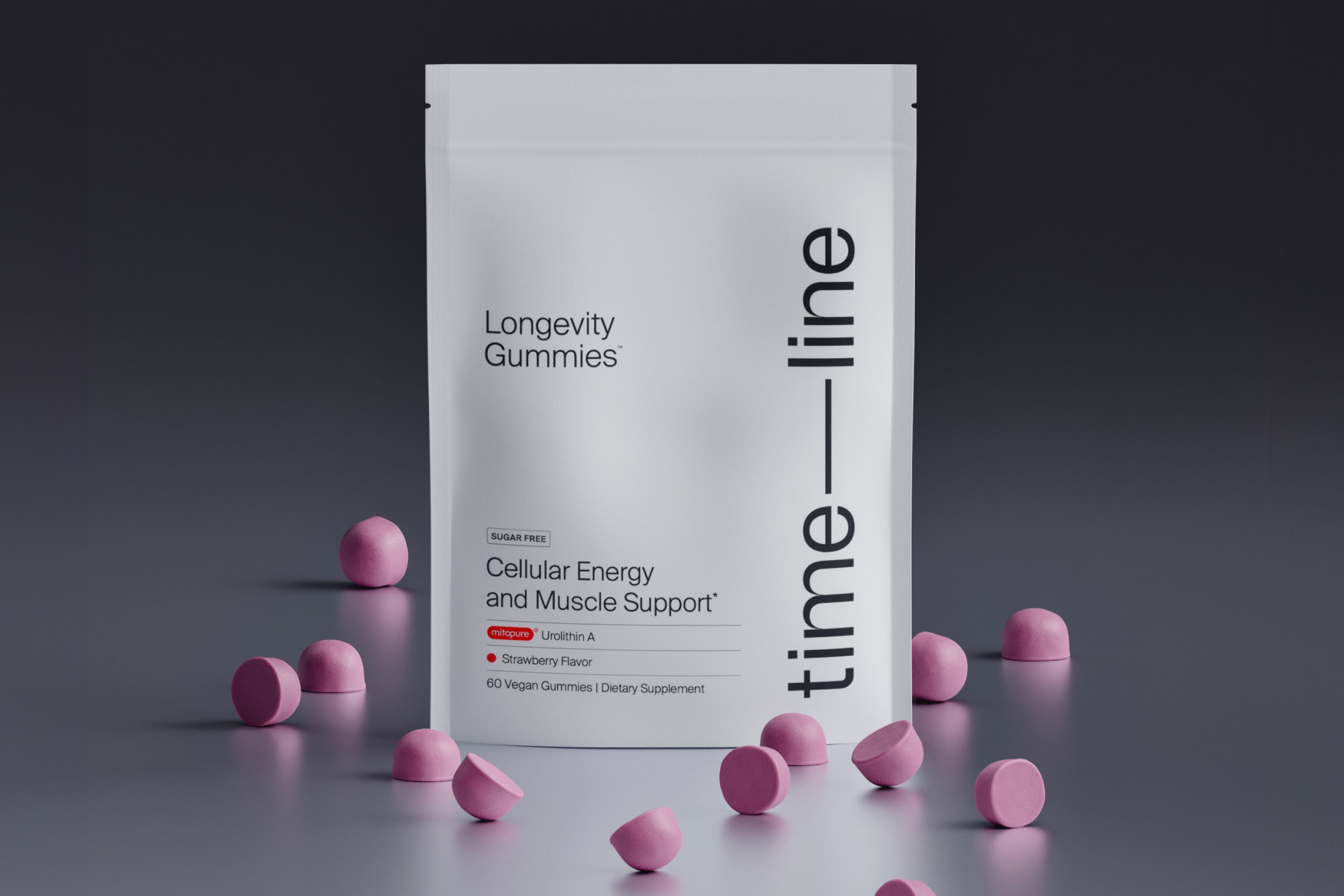
•
Nutrition•
First-of-Its-Kind Longevity Gummy Launched
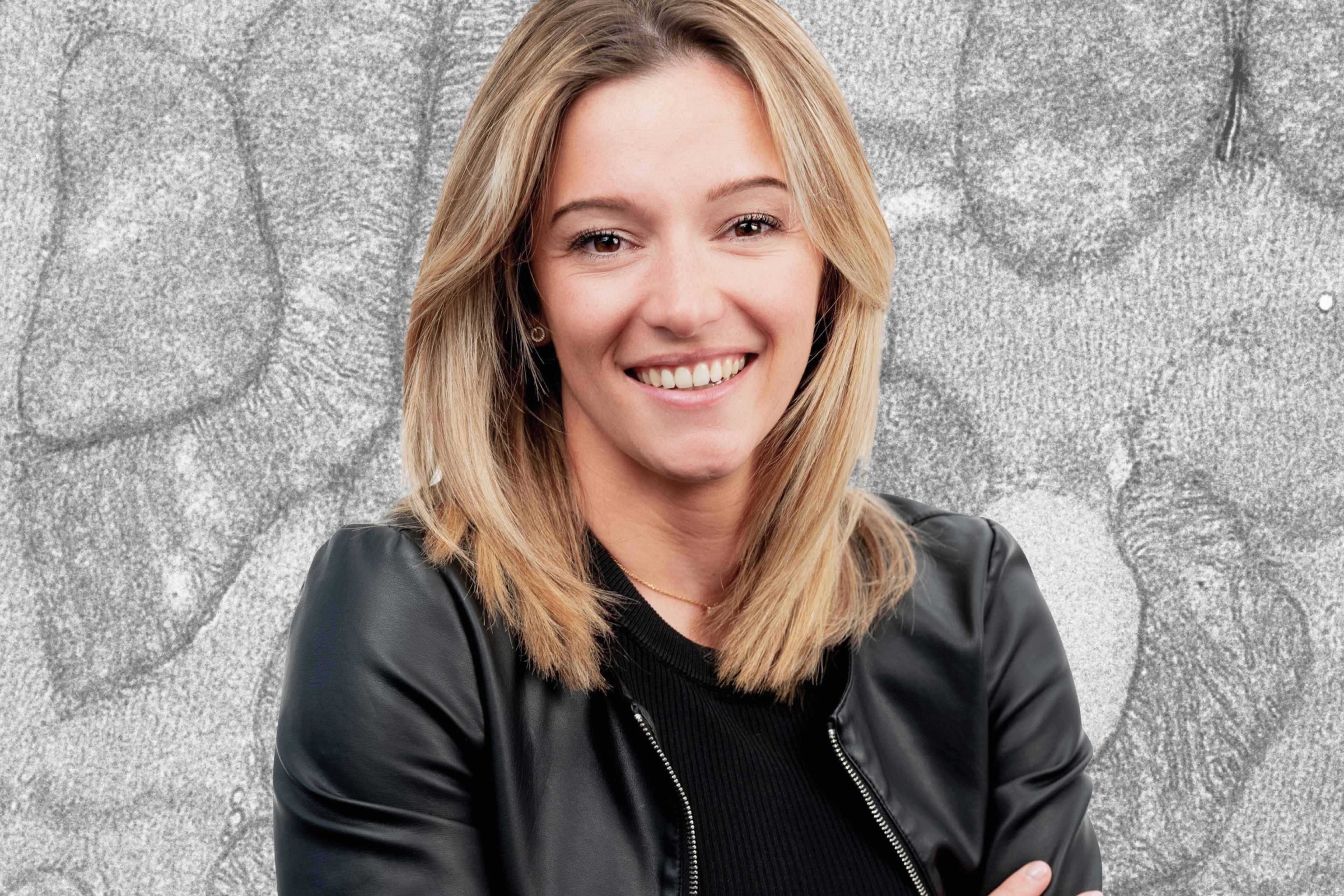
•
Skincare•





